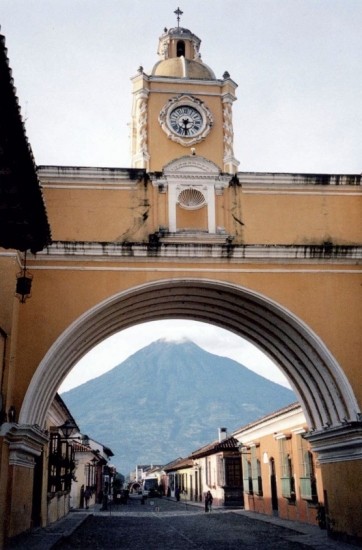
The view from Antigua
Its outstanding natural beauty which includes volcanoes, tropical jungles and the world’s most beautiful lake, together with a rich cultural heritage of impressive Mayan ruins and their present day descendants all packed into a comfortably small area make Guatemala an ideal destination for a short exciting holiday.
We traveled around Guatemala by “chicken bus”, American school buses in less than perfect condition and usually so full that one more chicken could cause the welded seams to pop. The loud meringue music, the constant stream of salesmen peddling food, educational material or some weird medicinal concoction during the trip, and the fact three adults share a seat made for two children, (which means that if you are the one sitting on the aisle side, one cheek is left hanging in the air), always made for an amusing, if bone shaking, few hours.
Guatemala is the center of Mayan culture and so we started our visit at the ruins of Tikal. Early in the morning, we climbed to the top of one of the Mayan pyramids emerging above the jungle canopy, in order to see the sunrise over these ancient temples hemmed in by seemingly endless tropical jungle, much as the ancient Maya must have seen them centuries before. The jungle is home to howler monkeys, toucans and a wide variety of other animals, birds, insects and snakes. Having a local guide explain the significance of the various structures allowed us to better appreciate the level of sophistication of this fascinating rich culture and also to learn more about the rich plant and animal life that abounds.
From Tikal we made our way to Finca Isabel, a resort farm, offering a range of rooms from a hammock or a tree house to ensuite rooms. The resort works on the honor system – take what you want, write down in the exercise book and pay when you leave. Supper is a communal meal taken on the veranda around an enormous table, giving one the chance to hear from the other mostly young travelers what they had done during the day, thus helping you to decide what to do the following day. We chose a guided hike, walking three hours through the jungle and fields to a cave, through which an underground river flows and in which we walked for an hour using candles and torches to light the way, progressing until we reached a waterfall dropping six meters into a big pool. The guide, after explaining s where the rocks were hidden in the pool, then dowsed all the lights and told us to jump from the top of the waterfall as far as possible out into the black nothingness of the pool below. This was one of the more terrifying moments in my life. After climbing up a rope back to the top of the falls we slowly made our way back along the underground river, tired but exhilarated, and then trekked through a skin soaking tropical downpour back to the farm house and supper.
Our next stop was Rio Dulce, a small town situated where the river Rio Dulce runs out of Lago de Izabel. From here we made a field trip to two of Guatemala’s less known but no less wonderful sights. From the small dirt road where the intervillage bus dropped us, it was a short walk along a river to a beautiful pool surrounded by dense foliage. The water in the pool was pleasantly cool and falling into the pool was a steaming hot waterfall mixing together with the cold water of the river. This is the ideal place for some relaxing do-it-yourself water therapy. Sit in the cool river while the steaming hot water pummels your back, shoulders and head from above. From here we hitchhiked in the back of a bread delivery van to another river, Boqueron Canyon, even further off the tourist track. A young man was playing ball with some children and for a dollar or two he agreed to take us up the river in his dugout canoe. The river gets narrower and narrower while the cliffs on either side get higher and higher almost touching overhead. The rock walls have been chiseled out over thousands of years by the rain and wind, creating strange and wonderful sculptures.
The next day we sailed on a catamaran down the river Rio Dulce to Livingstone, a town on the Caribbean coast which is accessible only by boat, either from the river or the sea. The highlight of the trip itself is the scenery, with the tropical vegetation coming down to the blue water’s edge. An occasional house sits on the river bank, the home of one of the fishermen casting their nets from their small boats on the river. We stopped next to a small island for lunch and a swam in the hot sulphuros water that bubbles up from a spring on the floor of the river. Livingstone is home to a large portion of Guatemala’s black Garifuna people and has a culture of its own. Music, food and a special laid back “manana” feeling make this funky town a great place to chill out in. Sit on the veranda of a street side restaurant, sip an exotic cocktail and watch the world go by ever so slowly.
Two days in Honduras to see the Mayan ruins at Copan and then we made our way to Antigua, a small town which was the colonial capital until earthquake damage decreed otherwise. The cobbled street, the beautiful colonial buildings, the women in their multicolored embroidered blouses, all set against the backdrop of a perfect volcano cone, make this a story book town in which to spend some time. Stay in an old Spanish villa that has been turned into a luxury hotel. Have a cup of coffee in one of the many courtyards while Mayan women display hundreds of colorful blouses. Eat great food in one of the many restaurants (as the Clintons did on their visit) or if you have even more time, this is a good place to learn Spanish. From here we took a trip to climb one of the active volcanoes, Pecaya. Easiest done with an organized day or night tour, a bus takes you to the start of the climb. There, those who wish to rent a horse with its guide for most of the ascent can do so. The path climbs through the trees up the base of the volcano reaching the cinder cone from which both walkers and riders must now walk to the top. The fine black sand/ash makes for difficult climbing and its two steps up and one down, but slowly slowly we make our way to the top. Sulphur fumes hang heavy in the air, the ground is hot and steam rises up from deep inside the crater. We can hear the lava bubbling down below. The view is superb, but one false step off the meter wide rim and you will literally have your goose cooked.
We took a minibus to Chichicastenango where twice a week a market is held in the large square next to the church of Santo Thomas. The market is a great color filled shopping and picture opportunity, but the religious ceremonies being performed both in the church and on its steps are no less fascinating. A combination of Catholicism and traditional beliefs make this into a truly enthralling experience not to be missed. The smoke filled, dark interior of the church and the colorfully dressed women making offerings give a mystical touch to the goings on. The blouses worn by the Indian women were a constant source of wonderment to us. Every centimeter is covered with multicolored handmade embroidery, the pattern particular to each area of the country.
From here we left behind the regular tourist route, making our way into the mountains in the north west of the country. Bussing where possible and hitchhiking where there were no buses. The going is slow as the roads twist and turn up the mountain, moving from village to village. Each area has a different dress code allowing us to identify, later on, from which village people in the towns originally came from. Usually it’s only the women but sometimes both men and women dress in their traditional costumes. We arrived in one village, Todos Santos, where all the women wore purple jackets and red pants with white stripes. Added was a straw hat, of the kind that one sees on a horse in the movies and it looked like a set at Universal Studios. Facilities in these small places are very simple, and the best hotel offered a few tiny rooms with a cold water outside shower and toilet. We hiked in the mountain, met local farmers and learned about a way of like which has probably changed little over the past few hundred years. We saw how these descendants of the Maya wove beautiful cloth on their home loom. Set out on the porch of every one room farm house, cooked in earthen ovens and slept entire families in one smoke filled windowless room.
We felt the need to pamper ourselves and spent two nights in the second biggest town in Guatemala, Quetzaltenango (Xelo for short), in the most wonderful boutique hotel. We had enormous helpings of delicious Italian food at Cardinali’s and spent the rest of the evening at La Luna, a unique coffee shop frequented by locals and tourists alike. The décor is the South American equivalent of English Victorian. Not to be missed. The main square of the town is beautiful and a great place to sit and take in the local scene.
I had read that Aldous Huxley had pronounced Lake Atitlan the most beautiful lake in the world. I don’t know if it really is the most beautiful lake in the world, but it is the most beautiful lake I have ever seen. It is a large lake formed inside the crater of an enormous volcano. The water is ink blue and the sides of the crater rise up steeply from the water, covered in thick green layers of creepers and trees. On the far side of the lake stand three volcanoes seemingly placed there by someone who had just done a course in landscape architecture. One arrives at the lake from high above its shores and it was a real effort to tear ourselves away from the observation points and gradually make our way down to the small town of Panajachel on the lake edge. Once again a luxurious Spanish villa is the hotel of choice and a base to take boat trips to visit villages dotted around the lakeshore. We did our last minute shopping and sat next to the lake trying to engrave this unique image into our “never to be forgotten” file, as early the next morning we would have to say goodbye to this fascinating, beautiful country whose rich Mayan past lives on in part through the colorful Indians that make up half of Guatemala’s population.
guatemala
-1372412414.jpg) esra-befrienders
esra-befrienders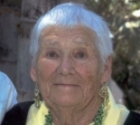 Change of guards at Herzliya Golden Friendship Club
Change of guards at Herzliya Golden Friendship Club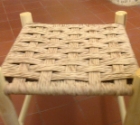 Who moved my stool?
Who moved my stool?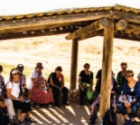 From Bible to Bedouins and Battles
From Bible to Bedouins and Battles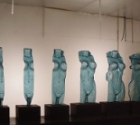 Trip to the Dead Sea
Trip to the Dead Sea Japan
Japan Brian Braude
Brian Braude